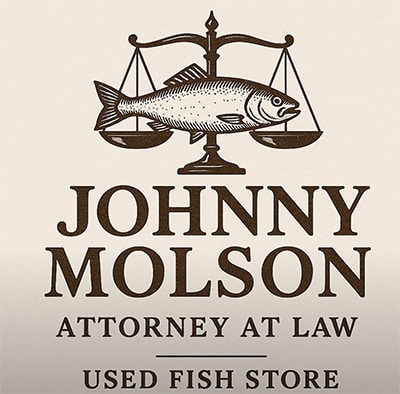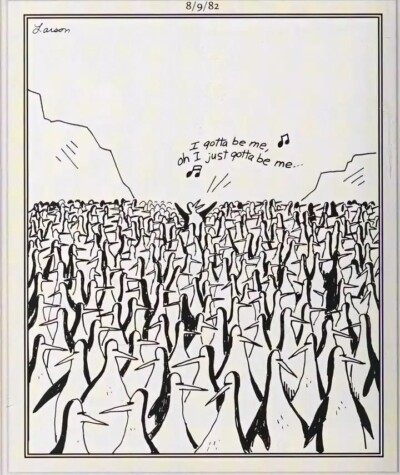Watch the video above or read below.
I asked it to make a logo for my new business: Johnny Molson Attorney at Law and Used Fish Store.

And it’s O.K.
Of course, creating a logo with A.I. is soooo 2023. So, I asked it to create a TV commercial.
And it’s O.K.
The question is… is your business just O.K.?
Is it “O.K.” for something that’s just “O.K.” to represent your business?
Do you only think of your business as an “O.K.” business with an “O.K.” product to offer? If so, A.I. is “O.K.” for you.
Now, I know enough to know A.I. is sophisticated enough to create astounding things that are nearly undetectable from real. But businesses aren’t using this powerful, earthshattering technology to make amazing things.
79% of businesses are using it for email spam filtering, and 62% are using it for chatbots for customer service. Robots talking to your customers works “O.K.” for most interactions, so why not?
Bryan Eisenberg, co-author of the new book I Think I Swallowed an Elephant recently said:
AI is not the threat. Autopilot is.
The brands that will lead tomorrow won’t rely on volume.
They’ll rely on clarity, conviction, and trust.
Because in a world full of synthetic noise, the most powerful signal is still something authentic.
The “Dead Internet Theory,” in part, imagines a world where computer generated content is being read by Google computers. Robots talking to robots. While this theory is also filled with “deep state/shadow government” fairytales, we have reached a weird tipping point where non-human traffic online is matching that of carbon-based lifeforms.
In a study of almost 1 million webpages, Ahrefs found that 74% include AI content.
Just last year, Google began cracking down on websites that are “unhelpful, have a poor user experience or feel like they were created for search engines instead of people.”
In other words, optimizing for the language of search engine isn’t going to work as well as it once did.
Within the last month, YouTube is turning the screws on “inauthentic” content, stating: YouTube has always required creators to upload “original” and “authentic” content. On July 15, 2025, YouTube is updating our guidelines to better identify mass-produced and repetitious content. This update better reflects what “inauthentic” content looks like today.”
The opportunity, as Bryan Eisenberg put it, is in authenticity. If your competitors are using templates, and they likely are, you just have to nudge above the static of sameness. Much like this classic Gary Larson cartoon.

You just gotta be you. And you are more than merely “OK.”
Cool technology? Sure. And bigger things are coming from the artificial electronic brain.
Just be sure you keep using yours.
- Marketing Has a Physics Problem - December 3, 2025
- AI is OK - August 14, 2025
- Emotion in Advertising Equals Dollars in Business - December 3, 2024
